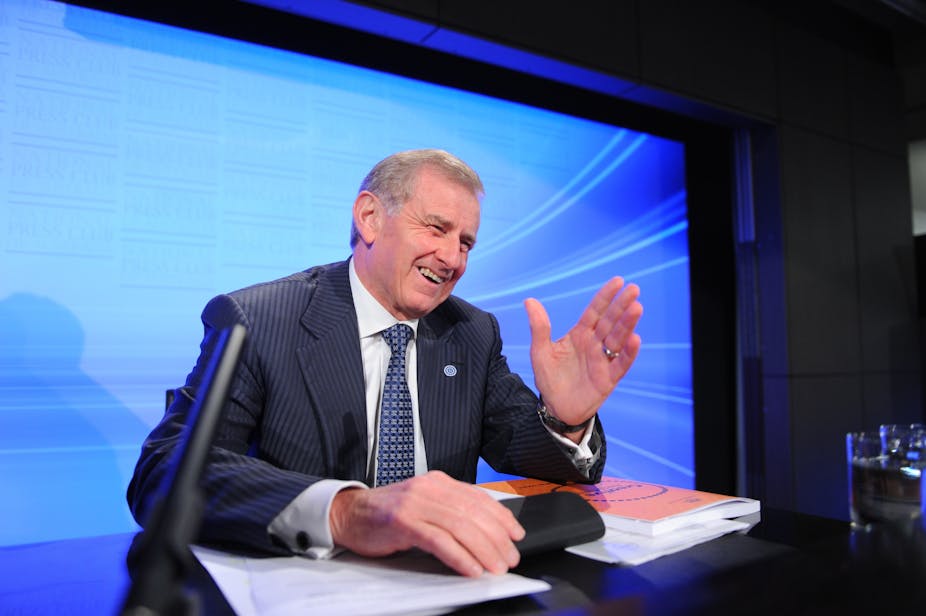The first major national cultural policy in 19 years was unveiled by Minister for the Arts Simon Crean yesterday. Minister Crean has called it “a national cultural policy for the decade.” Uncharitable souls might ask “which decade?”, given that it was first promised soon after the election of the Rudd government in 2007. It is, however, a bold and forward-looking statement.
In marked contrast to the limited detail provided by Communications Minister Stephen Conroy in support of the media reforms he announced on Tuesday, more than 150 pages Creative Australia outlines a comprehensive set of proposals for immediate action, and some aspirations for the longer term. Like the media reforms, however, it may not survive if there is a change in government in September.
In October 1994, the Keating government’s Creative Nation Commonwealth Cultural Policy presented an emerging vision of a culture-led economy that was both proudly Australian and “open to the world”. Creative Australia similarly emphasises the contribution that cultural and creative industries can make to innovation and national productivity. More than half a million people are directly employed in these industries, up from around 300,000 in 1994. Employment growth is double the national average. For all the focus on mineral resources, the arts and culture are the real keys to the nation’s future spiritual and economic wealth.
Creative Australia is less anxious than its predecessor about the prospect of Australia being “swamped” by international content and culture, and more bullish about future opportunities. Great stress is placed on “joining the dots” between the arts and other policy domains, from the new national arts curriculum that embeds arts and media education in schools from primary level onwards, to the role of cultural diplomacy in Australian foreign policy, particularly in Asia.
Of Creative Australia’s funding envelope of $235 million, $190 million is new money. Much of it will come from other portfolios, as Minister Crean delivers on the partnership-oriented approach he championed during the review.
Funding and responsibility for regional touring programs will be transferred from the Department of Regional Australia, Local Government, Arts and Sport to the Australia Council. The Department of Education, Employment and Workplace Relations and Screen Australia will fund a new program to create 40 new media jobs for Aboriginal and Torres Strait Islander people.
A new organisation, Creative Partnerships Australia, will be set up to bring together artists, philanthropists, corporate donors and sponsors. This organisation will also facilitate new funding models, with programs for micro-loans, crowd-sourcing and matched funding. A new National Arts and Culture Accord will bring together governments at all levels to agree a coordinated, collaborative three-year plan in which arts education will be prioritised.
Where Creative Nation sought to shift the policy and funding focus from supply to demand, Creative Australia seeks to enhance the “social dividend” of the arts by “supporting excellence” in production and training. Legislation will be introduced next week to “modernise” the Australia Council and give it a new mandate to support artistic excellence. The restructured council will also receive the largest single tranche of new funding, amounting to more than $75 million. Six elite training institutions will receive almost $21 million over four years. Six major performing arts companies will receive an additional $9 million. And a Major Performing Arts Excellence Pool will be established in partnership with state and territory governments to support new, innovative projects.
The new national cultural policy joins the growing rank of major policy proposals made since the election date was announced last month. But cultural policy is rarely seen as a critical vote changer. Creative Nation appeared halfway through the Keating government’s second term.
It was a thank you gift to the arts community which had noisily and effectively backed the prime minister in the “unwinnable” 1993 election. Most of its programs, which included ambitious upgrades to Indigenous art support, innovative SBS content production, funding for commercial television production and cutting-edge multimedia technologies, were able to be implemented and run for one full funding cycle before they were dismantled by the Coalition after 1996.
Creative Australia comes very late in the current political cycle, and this may prove to be its downfall. Despite its ambitions, and the minister’s enthusiastic support, and notwithstanding the substantial program for change, this policy may not be given the opportunity to be as influential as its predecessor.
While the Minister pleaded at yesterday’s launch for federal political bipartisanship given the importance of the arts to Australia’s future and identity, its long-term impact will probably depend on the outcome of the forthcoming election.

